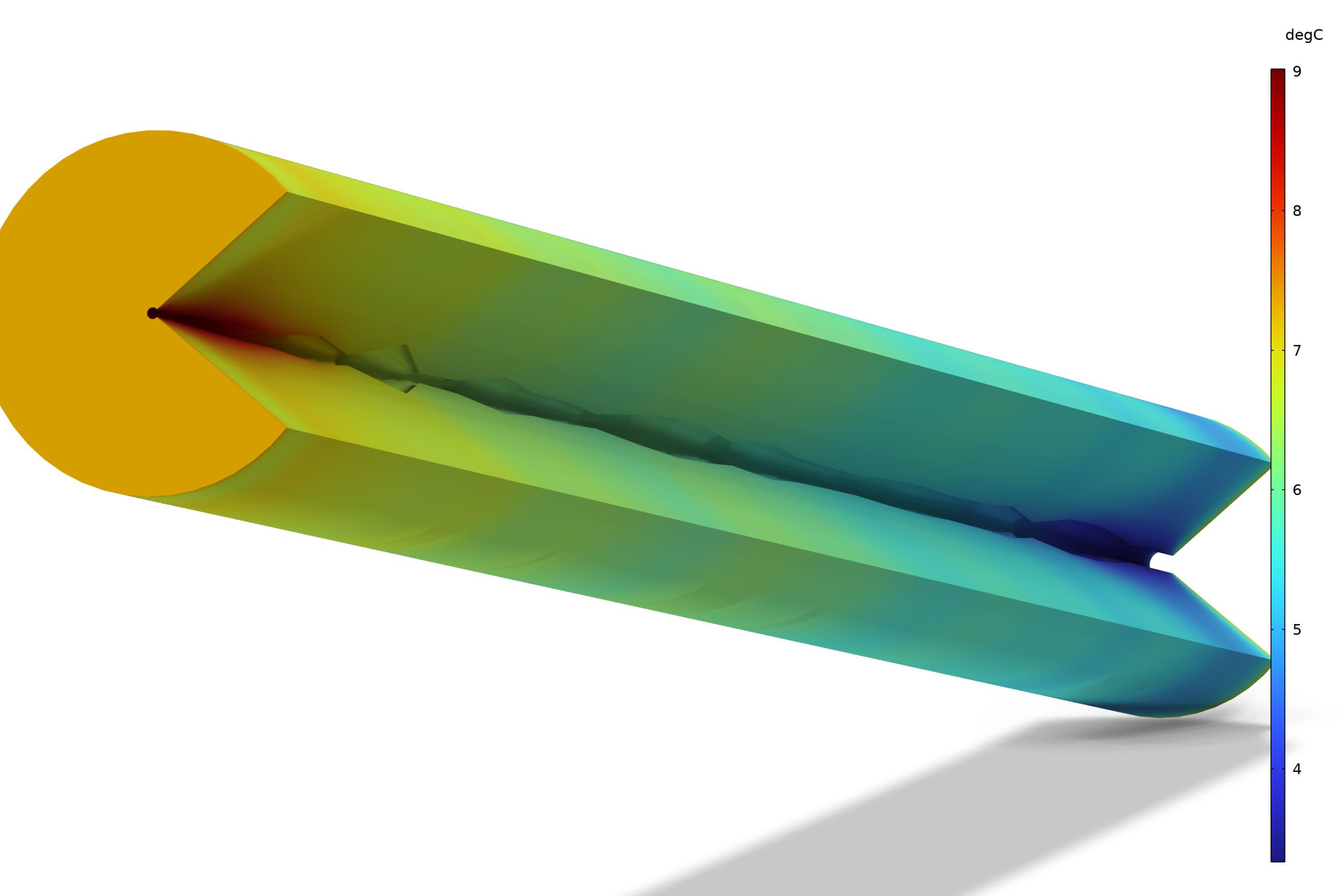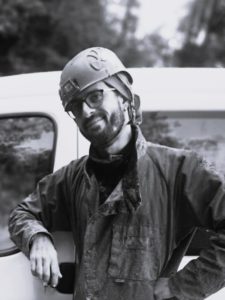Underground cavities are a fragile ecosystem in which biogeochemical processes are highly dependent on temperature. They also contain unique traces of their past environment, the interpretation of which is closely dependent on temperature.
In recent years, many studies have focused on speleothems, secondary carbonate formations such as stalagmites and stalagmitic flows, because of their ability to archive palaeoenvironmental information that can be dated with precision over the last 0.5 Ma or so. Several mechanisms, including thermal diffusion in the bedrock and advection by water and air, transfer heat from the outer surface to the cavity. Depending on the relative importance of these different flows, the underground temperature will be more or less attenuated and out of phase in response to temporal variations in the outside temperature.
Understanding the thermal response of karst to climate change is therefore fundamental to quantifying dissolution/precipitation rates, interpreting the geochemical variations observed in concretions and assessing the impact on living organisms in caves.
Based on the literature, we have formulated three hypotheses that we will seek to validate in the project:
- Ventilation of karstic massifs is a dominant mechanism for heat transfer
- The reaction time of massifs and caves depends mainly on advective flows (water and air), rather than on heat conduction in the rock.
- Heat exchange is sufficient to produce a significant quantity of condensation water to recharge karstic systems, at least under certain conditions.
The aim of the project is to carry out an in-depth analysis of mass and heat transfer in karst systems in order to answer these questions. In particular, we want to characterise the consequences of climate change on the underground environment and determine the thermal response of a cavity on different spatial and temporal scales. We will develop a simplified global model of karstic massifs made up of several sub-systems (rock, conduit, epikarst, etc.). Heat transfer by conduction and advection (water and air) in the rock and conduits will be fully coupled. However, the effects of natural ventilation in the caves and of the epikarst are not currently well quantified, making their modelling risky. Field measurements will therefore be carried out in parallel with the simulations.
To achieve this objective, the project relies on two teams with complementary skills, one specialising in the monitoring and conceptualisation of karstic systems (SISKA), the other in heat and mass transfer (FAST). These two aspects will therefore be dealt with in parallel. Initially, a parametric study (initial model) will be carried out using simplified analytical models to estimate the magnitude of the respective processes under different conditions. This will enable the development of the first numerical model (part 1) and field data acquisition (part 2). The two components will be synthesised iteratively throughout the research programme, enabling the three hypotheses to be discussed at the project's conclusion. Two main sites will be instrumented, including the Milandre underground laboratory where a large amount of data is already available. The sites will be monitored for temperature and for the main parameters controlling mass transfer: air and water flows, using direct (flow rates) and indirect (CO2 and radon) measurements.
A team of two PhD students is planned to deploy the monitoring in the field and develop the skills and simulation tools needed for the project. Experienced researchers from SISKA and FAST will actively support the PhD students to establish the procedures, develop the skills and make the decisions needed to solve the challenges that will arise.
This project will undoubtedly provide new information on the response of karstic massifs to climate change, on the ventilation of massifs and on the importance of condensation in recharging aquifers.
The results of the project will also provide essential data for other fields: drinking water supply (temperature variations in karstic springs), public health (radon exhaled in dwellings), speleogenesis (condensation corrosion), permafrost (natural glaciers), low-temperature geothermal energy (effect of conduits on heat exchange), tunnelling and mining (prediction of voids and massive water intrusions), remote sensing (interpretation of thermal anomalies), cave conservation (protection of archaeological and tourist caves), the carbon cycle (dissolution and precipitation of carbonates are controlled by pCO2, and therefore by ventilation), subterranean biology (subterranean biotopes...), etc.
The results of this project will become a key step in understanding heat transfer in carbonate rocks.
Link to the SNSF Thermokarst page




